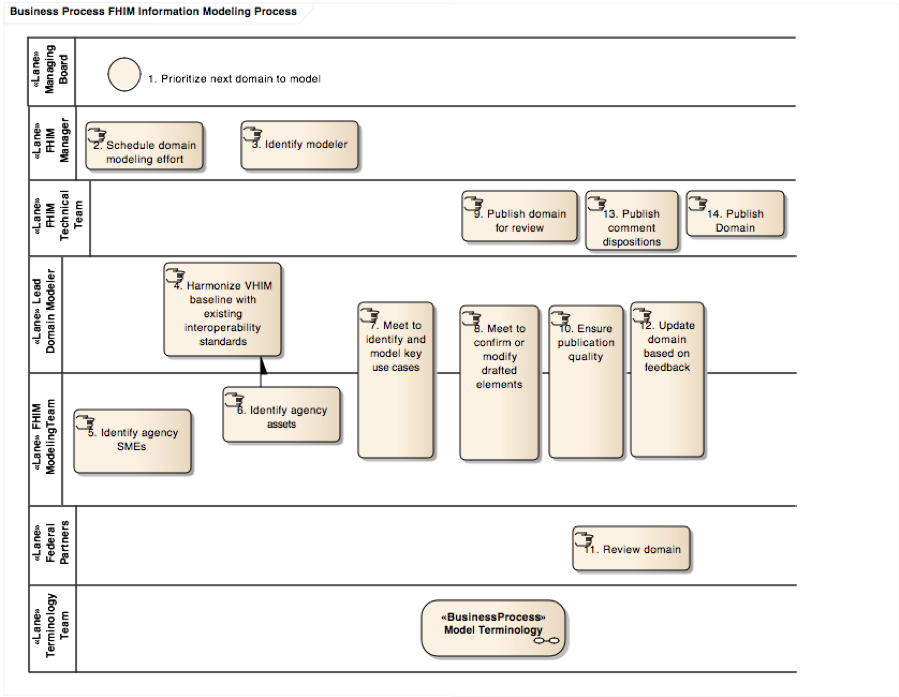The Information Modeling process is accomplished by examining existing systems and information exchange standards (e.g., HL7 FHIR) that use or define information concepts and data elements. Regulations which reference the concepts are assessed and subject matter experts are interviewed to learn of new information exchanges that may be needed. The concepts are compared and harmonized (for example, is patient last name and patient family name the same thing? And is the patient’s last name and the doctor’s last name the same idea applied to two roles?). The concepts are then iteratively assembled and modeled into classes and properties using the Unified Modeling Language (UML). UML is used as the modeling language because it fully supports generating documentation, implementation guides and software from the model. Concepts common to multiple entities are generalized into hierarchies or are related to each other so they can be re-used (for example, patients and doctors are people and people have last names). Clear definitions are documented for each concept. These definitions will often cite the systems or standards where they are used. Finally, the model contents are validated by the larger stakeholder community, where comments received are logged as issues in an issue tracking system and resolved with the subject matter expert team.

